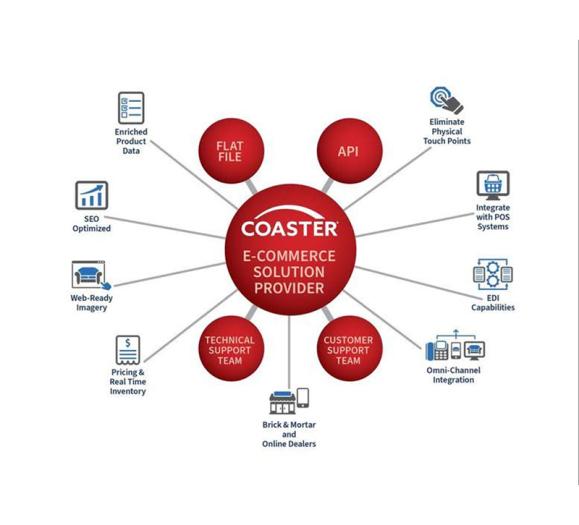Retailers’ profit margins have been more relevant than ever lately. It all started with curbside pickup, the only way many
stores could sell their products during the COVID-19 pandemic.
Now, some experts are suggesting retailers add similar programs: “You should really offer social shopping.”
“Why don’t you ship and return for free?” “Can’t you deliver to trunk like Amazon?” This advice is well-intentioned but misinformed. If you’re anything like the retailers I know, you don’t have unlimited capital from stockholders. Programs like these take funding — additional costs you’ll have to compensate for elsewhere.
Improving your retailers’ profit margin is a two-step process:
Step 1: Know your average profit margin (and a good margin to shoot for). I’ll make this process easy for you below, even if you’re not a “numbers person.” Step 2: Implement these proven ways to increase your retail profit margin — no complicated programs or freebies required.
What is retail margin? “If you don’t know your numbers, you don’t know your business.” – Marcus Lemonis
Here are the numbers you need to grow your business: Gross retail profit margin is the percent of revenue that remains after deducting the cost of goods sold. It doesn’t account for additional operating expenses — that’s net profit.
Your retail margin is a snapshot of your business’ general health. Plus, it shows how much revenue is flowing to your bottom line. If you don’t know your average retail profit margin, set up a meeting with your accountant or bookkeeper. Ask about operating expenses, variable costs and cash flow, too. If you want to improve your profit margins, start by regularly reviewing your numbers. It’s much easier to arrive at your goal destination if you know where you’re starting from.
8 Tips to Increase Profit Margins
1. Increase Prices
You don’t have to increase prices across the board. Instead, selectively raise the cost of your most popular items. You’ll effectively add to your bottom line and improve profit margins, too. Your customers don’t know your cost of goods. Plus, they’re purchasing from you for the shopping experience.
PRO TIP: Are you one of the lucky retailers slammed with revenge buying customers? Scarcity gives you cover to raise your prices (if you have the merchandise). Don’t be afraid to do so.
2. Narrow Your Focus
You can’t be all things to all people — nor should you try to be. Consider how much profit you’re earning on slower-moving items. Could you devote that space to quicker-moving, more profitable items? Yes!
3. Limit Discounting
It’s tempting to turn to discounts to make a sale. But mark-downs can rob you of earnings — and they don’t increase profit margins. Discounts work, but sparingly. A quarterly promotions schedule is a good target, for example. Customers post-COVID seem less driven by price than by safety. So limit discounting.
4. Cut Waste
Are you hiring out for jobs your current staff could do? Get more done with who you have, even if you’re not at full staffing. Your retail profit margins will thank you.
5. Schedule Retail Employees to Need
Do you have three employees opening when you really only need two? Are you understaffed on Saturday when you’re slammed? Ensure your employees’ schedules best fit your store’s needs. Save money, but don’t risk losing customers to competition due to poor service.
PRO TIP: With more people working from home, the conventional thinking that Saturday is the busiest shopping day isn’t always true. Inform your scheduling by your numbers.
6. Award Extra Hours on Merit
Grant employee requests for more hours based on their average sales (or the number of units per customer sold). It’s better to reward the retail associate helping you sell merchandise than to say yes to every staff request.
7. Give bonuses When Deserved
Pay bonuses proportionate to profit, not total sales numbers.
8. Sell added value by bundling products and services
Your customers value their time, so they’ll pay for valuable services related to the products you carry. People don’t want the hassle of figuring things out themselves. And they really don’t want to screw things up. Selling added value is the way to a very profitable future.
Bottom Line
Most retailers evaluate operating profit margin a few times a year. If you’re serious about increasing profit margins, any time is an excellent time to review your numbers.
Improved retail profit margins don’t just come from discounts or cutting staff. Instead, limit unnecessary costs while increasing the number of items sold at the right price. That goes for expensive products, too.
Be sure to train your staff and improve your customer shopping experience, too.
For more on this topic, visit
www.retaildoc.com/blog/retail-management-tips-15-ways-to-increase-profit-margins-besides-retail-sales-training
By Bob Phibbs, The Retail Doctor. To learn additional steps to a profitable retail business and more about Sales RX, visit retaildoc.com.







